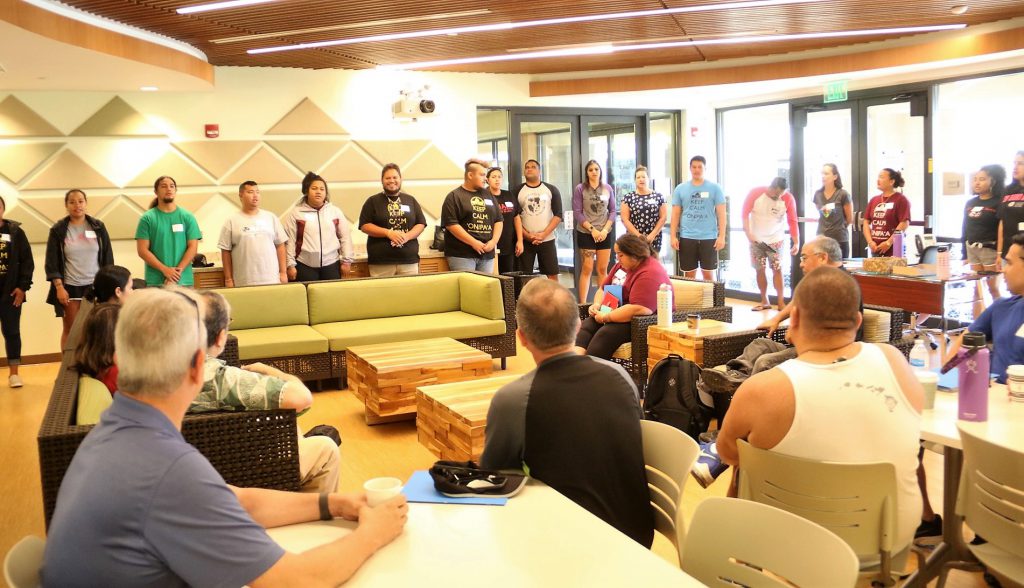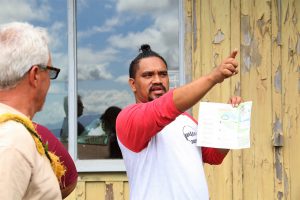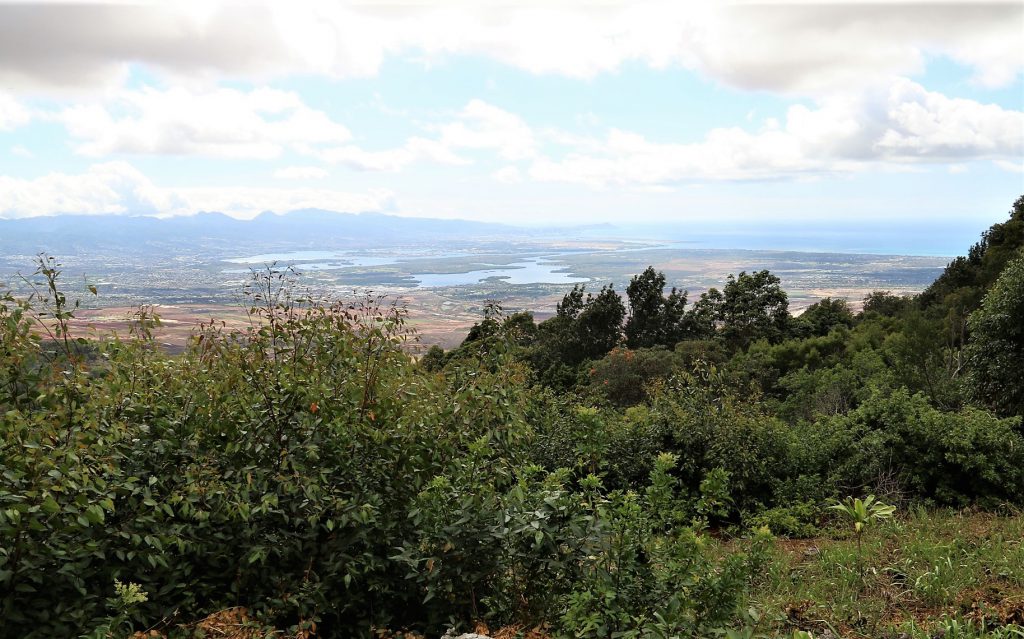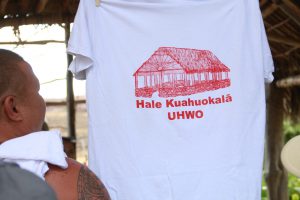
Pili ʻĀina began with the singing of Mele Honouliuli
The 2018 Fall Semester’s Pili ʻĀina began Thursday morning with the singing of Mele Honouliuli, a song highlighting the significant features of the Honouliuli, the largest ahupuaʻa within the ʻEwa moku and on Oʻahu.
It was a fitting way to begin the day of cultural development for UH West Oʻahu’s faculty and staff, because the geographic spots shared in the song were among those that would be visited by the group. The participants came from across UH West Oʻahu’s campus and included new faculty and staff as well as employees who’ve worked on campus for years, but have never had a chance to attend a Pili ʻĀina.
The Aug. 16 event had several goals including helping faculty and staff connect with the community and give them an understanding of place, something that, along with people, are fundamental to Hawaiian culture. As Pu’u Zablan, PIKO assistant director and author of the Mele Honouliuli, said, it was important for faculty and staff to understand the place where they work and the areas from which their students come in order to better serve them.

McD Philpotts (l) and Pu’u Zablan (r)
Pili ʻĀina also goes to UH West Oʻahu’s mission that embraces Native Hawaiian culture and traditions while supporting students of all ethnic backgrounds. The campus’ Strategic Action Plan also lays out a vision of a dynamic learning environment where all students, faculty, and staff embody and perpetuate Pacific and global understanding rooted in Native Hawaiian values.
It’s also hoped Pili ʻĀina will help foster a sense of community among faculty and staff, while increasing connections between the campus and the broader community. Objectives include showing participants how place and people are fundamental to Hawaiian culture and understanding, and increasing understanding of culture-based and placed-based pedagogy to assist in academic achievement, engagement and retention of students.
To help provide an understanding, participants were taken to:

Participants got a chance to see Oahu from 3,700 feet elevation at Pālehua.
- Pālehua. Located above Makakilo in the Waiʻanae Mountain Range, this was known to be a place with abundant ʻohiʻa blossoms in ancient times, when the area was named Manawahua or Makakilo. Participants learned about the area’s history from McD Philipotts, a descendent of West Oʻahu’s Campbell family and traveled to the 3,700-foot level to get a panoramic view of Oahu’s south side.
- Puʻuʻokapolei. This was known as the epicenter in the district of Honouliuli and the site of a sacred temple. Participants heard from Mikiala Lidstone, head of the Ulu Aʻe Learning Center and a steward of Puʻūokapolei, which is associated with the gifts of Kapōʻulakīnaʻu, one of Pele’s sisters.
- Kapāpaʻapuhi. The tour of Honouliuli included both areas in its mountains and a visit to sea level at Kapāpaʻaphui, an area where fishponds were located that helped provide for thriving population in Honouliuli.
UH West Oʻahu also was a stop on the tour, with participants assembling at Hale Kuahuokalā in the Student Organic Garden to hear from artist A.R. Kupihea and Kēhaulani Kupihea.

Participants also screen printed shirts as part of the activities
Faculty members will also be given a chance to further engage the local community during three site visits during the 2018 Fall Semester sponsored by the UH West Oʻahu Institute of Engaged Scholarship. As with Pili ʻĀina, the visits are an opportunity for faculty to gain a deeper knowledge about Honouliuli. During the visits faculty will be provided with an opportunity to collaborate with community members and other faculty on ways to enhance engaged scholarship experiences and activities.
On Aug. 24 there will be a visit to Camp Pālehua on the southern slopes of the Waiʻanae mountains. The second of the visits is scheduled for Sept. 28 to Hanakēhau Farm in Waiawa Makai, where work is underway to restore ʻāina after years of use by the military. On October 26 the visit will be to Mālama Loko Ea, an ancestral place of importance in Haleʻiwa. Each visit is on a Friday from 12:30 to 4:30 p.m. UH West Oʻahu faculty should register at https://goo.gl/forms/gKwKggmiNTwArYul2.
